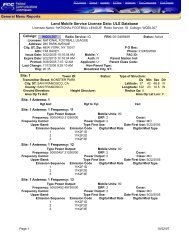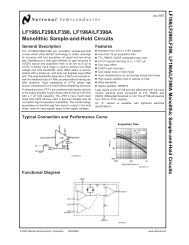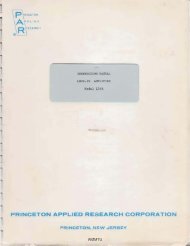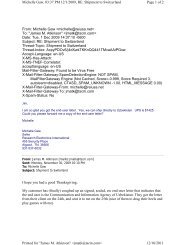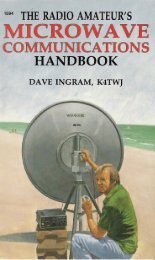A License Plate Recognition and Speed Detection System - Index of
A License Plate Recognition and Speed Detection System - Index of
A License Plate Recognition and Speed Detection System - Index of
You also want an ePaper? Increase the reach of your titles
YUMPU automatically turns print PDFs into web optimized ePapers that Google loves.
law, a warrant-less crime must be committed in presence <strong>of</strong> a police <strong>of</strong>ficer <strong>and</strong> the arrest for the<br />
crime must be immediate. This has lead to a number <strong>of</strong> legal challenges to moving violation<br />
arrests based on the use <strong>of</strong> photo radars or red light cameras. The challenges have two<br />
components. First, since the photo radar/red light cameras are machines <strong>and</strong> not human beings,<br />
the requirement “in presence <strong>of</strong> a police <strong>of</strong>ficer” was not met. Second, the infraction was<br />
recorded by a device that required the retrieval <strong>of</strong> film or the processing <strong>of</strong> digital data<br />
introducing a time delay, the arrest was not immediate. An on-line review (Lexus-Nexus <strong>and</strong><br />
Loislaw databases) has shown the courts to be unsympathetic to these arguments provided that<br />
the citation is issued “in a reasonable amount <strong>of</strong> time”. Various state laws have defined the<br />
meaning <strong>of</strong> “in a reasonable amount <strong>of</strong> time”. For example, the State <strong>of</strong> Rhode Isl<strong>and</strong> defines it<br />
to be within 14 days <strong>of</strong> the occurrence <strong>of</strong> the infraction. Other states require the citation to be<br />
mailed within 48 hours <strong>of</strong> the infraction. The U.S. Supreme Court to date has not commented on<br />
nor felt obligated to redefine common law practices; thus legal challenges based on a strict<br />
interpretation <strong>of</strong> common law will continue to fail.<br />
Further legal challenges to the use <strong>of</strong> photo radar <strong>and</strong>/or red light cameras have<br />
contended that these devices violate a person’s rights under the 4 th , 6 th , <strong>and</strong> 14 th Amendments to<br />
the U.S. Constitution. The Fourth Amendment states in part "the right <strong>of</strong> the people to be secure<br />
in their persons, houses, papers, <strong>and</strong> effects, against unreasonable searches <strong>and</strong> seizures, shall not<br />
be violated." For a photo radar/red light camera to be considered constitutional under the 4 th<br />
Amendment it must provide the government with “probable cause” to assume that a crime has<br />
been committed. Probable cause is defined under the 4 th Amendment as “a reasonable belief”<br />
that a crime has been committed. Reasonable belief is based on the circumstances. Thus, the<br />
reasonable belief that establishes the probable cause requirement is present when the police<br />
77





